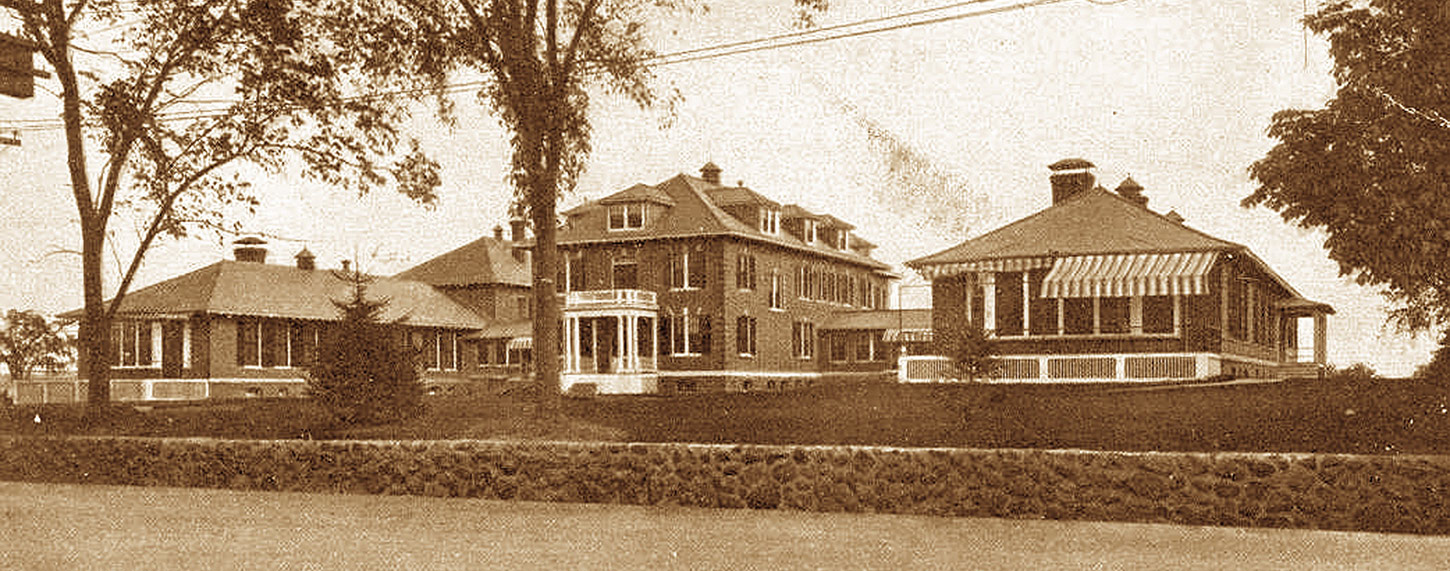For more information, contact Community Relations at:
08/02/2016
Celebrating 110 Years
By Noreen Biehl
For 110 years the hospital at the top of Garrison Hill has been open all day, all night. Walls went up, came down, and went up again, but as Board of Trustees Chairman Francis Robinson once said, “The heart of a hospital is not a building. The heart of a hospital is the hearts and hands of those who work in it and for it… as they carry on their comforting work.”
Its story began on a warm summer day, August 30, 1906, when local citizens gathered for the Wentworth Hospital dedication event. Subtle breezes ruffled the canopies shading the porches of the men’s and women’s pavilions, separated by a stately, two-story administration building. At 2:30 p.m. keynote speaker Col. Daniel Hall strode up to the dais to praise Arioch Wentworth for his gift of $100,000 to the City of Dover to build a hospital named Wentworth. His 5,000 word tribute extolled the multiple virtues of this fine institution noting, “the sciences of medicine and surgery, and public charity, are all in the making and still in the gristle, and he who lives 50 years, as some of you will, will see this institution a much larger one than we launch or contemplate today.”

From its beginning, the 30-bed cottage hospital became a “refuge for the sick and afflicted” regardless “of race, creed, or purse.” Its first superintendent, Grace P. Haskell, RN, and her small class of nursing students cared for patients with limited medicines and technology, documenting patient information in paper records. Charges ranged from $1.50 to $3.50 per day. Four general practice physicians and four general surgeons comprised the independent medical staff. The early decades were dominated by efforts to thwart epidemics of measles and influenza, ration food during WWI and the Great Depression, and provide care to people regardless of their ability to pay. Few patients were covered by medical insurance until after WWII, when companies offered insurance as an employment incentive. Generous donations from the Rollins family, Douglass families, and the Dunaway Foundation added space for new services. The name changed three times from Wentworth Hospital, to Wentworth City of Dover Hospital (1954) to Wentworth-Douglass Hospital (1961). Its highly regarded nursing school opened in 1906, closing in 1952 when professional nursing education moved to colleges and universities. As the fifties, sixties and seventies rolled in so did the specialists…pediatricians, obstetricians, anesthesiologists, oncologists, pathologists and many more. All physicians covered emergency, regardless of speciality, until emergency physicians took over 24/7 in the late seventies.
Legislation in the early eighties separated the hospital from the city, allowing the hospital to serve a wider community of towns and cities, and enter into relationships with other health care institutions. During the nineties and early 21st century, programmatic expertise soared in cancer care, women and children’s health, musculoskeletal and cardiovascular health, minimally invasive surgery, as well as, stroke, pain, and wound care. Recent donors supported the purchase of high-tech equipment, camps for kids with diabetes and cardiac disease, a community dental center and Care-Van services. The hospital became the Seacoast’s leading medical center, a system of care that today includes over 2,500 employees, a 400 member medical staff, primary care and specialty practices, the Wentworth-Douglass Foundation, The Works Family Health & Fitness Center and affiliations with academic medical centers including Massachusetts General Hospital.
Wentworth-Douglass Hospital is, indeed, a much larger institution as Col. Hall predicted, yet its heart is still in the hands of those who care.